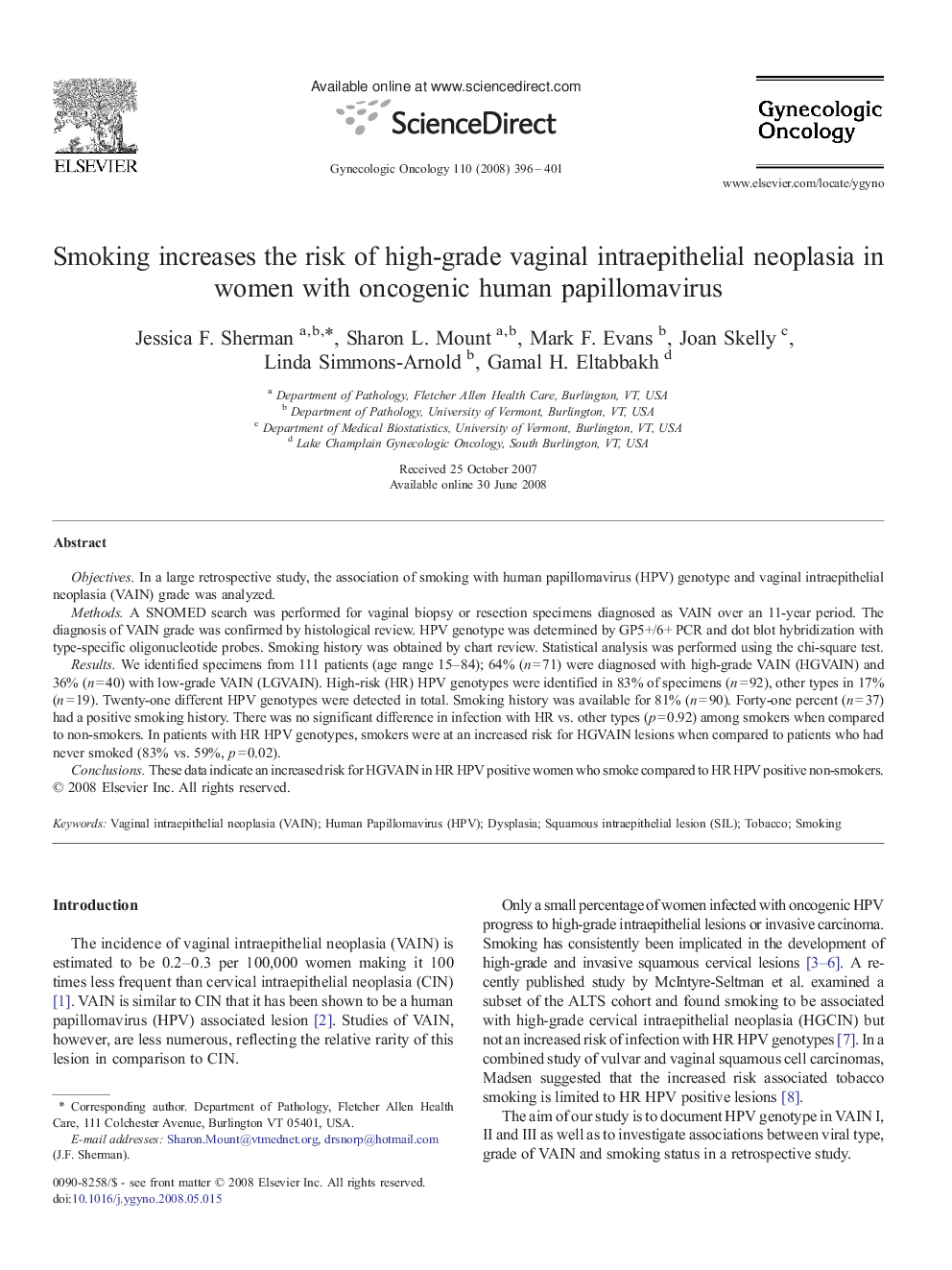| Article ID | Journal | Published Year | Pages | File Type |
|---|---|---|---|---|
| 3944514 | Gynecologic Oncology | 2008 | 6 Pages |
ObjectivesIn a large retrospective study, the association of smoking with human papillomavirus (HPV) genotype and vaginal intraepithelial neoplasia (VAIN) grade was analyzed.MethodsA SNOMED search was performed for vaginal biopsy or resection specimens diagnosed as VAIN over an 11-year period. The diagnosis of VAIN grade was confirmed by histological review. HPV genotype was determined by GP5+/6+ PCR and dot blot hybridization with type-specific oligonucleotide probes. Smoking history was obtained by chart review. Statistical analysis was performed using the chi-square test.ResultsWe identified specimens from 111 patients (age range 15–84); 64% (n = 71) were diagnosed with high-grade VAIN (HGVAIN) and 36% (n = 40) with low-grade VAIN (LGVAIN). High-risk (HR) HPV genotypes were identified in 83% of specimens (n = 92), other types in 17% (n = 19). Twenty-one different HPV genotypes were detected in total. Smoking history was available for 81% (n = 90). Forty-one percent (n = 37) had a positive smoking history. There was no significant difference in infection with HR vs. other types (p = 0.92) among smokers when compared to non-smokers. In patients with HR HPV genotypes, smokers were at an increased risk for HGVAIN lesions when compared to patients who had never smoked (83% vs. 59%, p = 0.02).ConclusionsThese data indicate an increased risk for HGVAIN in HR HPV positive women who smoke compared to HR HPV positive non-smokers.
